- Remittance
- Exchange Rate
- Stock
- Events
- EasyCard
- More
- Download
The Federal Reserve's interest rate cut is good news, and gold is poised to take off. How should inv
Many friends have asked me how I view gold and how it will perform during the interest rate cut cycle.
Today, the editor will focus on gold.
At 2:00 am on Thursday, the Federal Reserve will announce its interest rate decision, and at 2:30 am, Federal Reserve Chairperson Powell will hold a press conference. This is undoubtedly the most important economic data of 2024. It not only means that the Federal Reserve may move away from long-term high interest rates and turn to rate cuts, but also conveys the actual expectations of the Federal Reserve for the current US economy. On the other hand, this is the most controversial interest rate discussion. As of now, the market’s expectation of a 50 basis point rate cut is 65%, and the expectation of a 25 basis point rate cut is 35%. In this case, no matter how much the rate cut is, the unilateral fluctuation of gold will be triggered in a second.
Regarding this disagreement, the message conveyed by the market is that former Federal Reserve senior advisor English and Dallas Fed President Kaplan hold the view of cutting interest rates by 50 basis points. In addition, Powell may face internal opposition, and if interest rates are cut by 25 basis points, which is in line with the principle of policy prudence, it is difficult to say that there will be strong opposition. The market judges that Powell may make a shocking decision to cut interest rates by 50 basis points. If so, gold will take off again.
What impact will the Fed’s interest rate cut have on gold?
The Federal Reserve’s interest rate cut usually has a significant impact on the price of gold. Here are several key factors that affect the gold price when the Federal Reserve cuts interest rates:
1. The relationship between interest rates and gold prices
- Lower interest rates :
- When the Federal Reserve cuts interest rates, the real interest rate (nominal interest rate minus inflation rate) usually decreases.
- In a low interest rate environment, the opportunity cost of holding interest-free assets such as gold decreases, making gold more attractive.
- Investors will shift from low-yielding bonds and savings to alternative investments such as gold.
2. The relationship between the US dollar and the price of gold
- Weakening of the dollar :
- Interest rate cuts usually lead to a depreciation of the US dollar, as low interest rates reduce the attractiveness of holding US dollar assets.
- The price of gold is denominated in US dollars, and the weakness of the US dollar makes the price of gold denominated in other currencies cheaper, increasing global demand and pushing up the price of gold.
3. Inflation expectations
- Inflation Protection :
- The Fed’s interest rate cut may lead to market expectations of future inflation.
- Gold is considered an effective tool for hedging inflation because its value usually does not depreciate with inflation.
- Investors often increase their demand for gold when they expect inflation to rise, pushing up its price.
4. Market risk aversion
- Increased demand for hedging :
- Interest rate cuts are usually one of the measures to deal with economic weakness, which may increase market uncertainty about the economic outlook.
- In times of economic uncertainty, investors tend to seek safe assets, and the demand for gold as a safe haven asset is rising, driving up its price.
5. Global market impact
-
International investment flows :
- The Fed’s rate cut will affect global capital flows, which may lead to capital outflows from the US and seek higher-yield markets.
- This capital flow could increase demand for gold, especially in the face of increased global economic uncertainty.
-
Gold is anchored to the mid-to-long-term real interest rate, which is negatively correlated with the mid-to-long-term real interest rate. Gold is inflation-resistant and safe-haven because high inflation and risk events can lower real interest rates, causing gold prices to rise. The negative correlation between the US dollar index and gold is also linked to the mid-to-long-term real interest rate, which implies economic prospects.
-
According to the actual interest rates calculated using TIPS bonds and BEI indices of various maturities, gold has the highest correlation with the 10-year real interest rate and the lowest correlation with the real interest rate below 5 years. Therefore, in research, it is often seen to compare and analyze the prices of 10-year TIPS government bonds and gold (negative correlation).
-
Real interest rates can be used to judge the price trends of assets such as gold and bitcoin. Similarly, in the past two years, the US has also experienced a cycle of real interest rate changes. Before the epidemic, the economic outlook was poor, and both nominal and real interest rates declined.
-
The sudden outbreak of the epidemic at the beginning of 2020 pushed the nominal interest rate of the US to the bottom, but with the release of fiscal stimulus plans and cash subsidies, the demand curve did not shrink significantly, and the inflation level instead rose due to consumption promotion. The split of downward nominal interest rates and upward inflation caused extremely low real interest rates, giving birth to a super bull market for virtual assets. In 2020-2021, the epic bull market for virtual assets, and gold also performed well.
Let’s review some historical gold performances again.
During the 2008 financial crisis :
- The Federal Reserve cut interest rates sharply and implemented Quantitative Easing policies, leading to a decline in real interest rates and a weakening of the US dollar.
- The price of gold rose from about $800 per ounce at the end of 2008 to about $1,900 per ounce in 2011, indicating a significant push for gold prices from interest rate cuts.
During the 2020 COVID-19 pandemic :
- The Federal Reserve lowered interest rates to near zero and implemented large-scale Quantitative Easing policies to cope with the economic impact of the epidemic.
- The price of gold reached an all-time high in August 2020, approaching $2,100 per ounce, reflecting support from interest rate cuts and economic uncertainty.
In summary, increasing the allocation of gold can be an effective strategy for hedging inflation and market uncertainty during the expected or actual interest rate cut cycle of the Federal Reserve. Investors can obtain gold exposure by directly purchasing physical gold, gold ETFs, or gold mining stocks. In addition to gold, investors can also consider other precious metals such as silver and platinum to further diversify investment portfolio risks. Maintaining a diversified asset allocation ensures certain returns and risk hedging in different market environments. Pay close attention to the policy trends, interest rate changes, and inflation expectations of the Federal Reserve. Adjust the investment portfolio in a timely manner based on economic data and market dynamics to ensure that the investment strategy can flexibly respond to changes in interest rates and inflation environments.
Seize the golden opportunity, gold ETF or preferred tool
For ordinary investors, compared to directly holding physical gold, gold ETFs are a more comfortable and convenient way to buy gold. Such products use gold spot contracts as the underlying asset, closely tracking the trend of gold prices. Not only are the investment thresholds and transaction fees low, but they also have strong liquidity. Investors can trade gold ETFs in the secondary market T + 0 through securities accounts. They can buy and sell on the same day, eliminating the storage and settlement difficulties of holding physical gold.
For example, investors can choose the multi-asset trading wallet BiyaPay to check and follow several of its gold ETFs, and choose the right time to trade them online in real time at any time. At the same time, it also provides recharge digital currencies (such as U) to withdraw US dollars/Hong Kong dollars to bank accounts, and then deposit and withdraw funds to other brokerage platforms, so that BiyaPay can be used as a professional deposit and withdrawal tool. Investing in these ETFs through such a multi-asset trading wallet can not only benefit investors from potential interest rate cuts, but also facilitate investors to trade US stocks, invest in diversified asset classes reasonably, and cope with future market fluctuations, pushing up the market value of US stocks.
Here are some recommended gold and precious metals ETFs worth considering, covering pure gold investment as well as multiple precious metal portfolio investments.
Gold ETFs:
- SPDR Gold Shares (GLD): This is one of the most popular gold ETFs that directly tracks the spot price of gold and is suitable for investors who want to invest directly in gold.
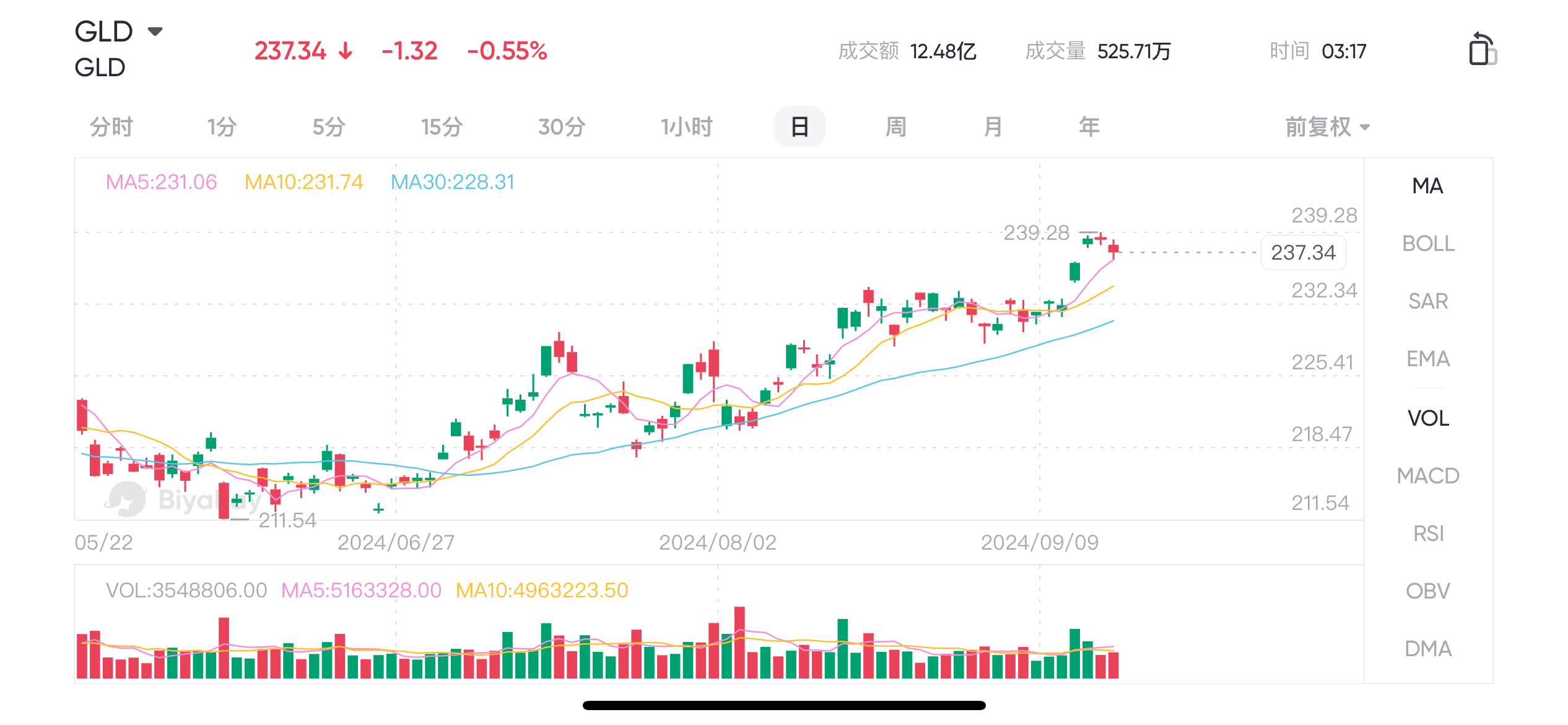
- iShares Gold Trust (IAU): Another major gold ETF with lower fees that also directly tracks the spot price of gold.
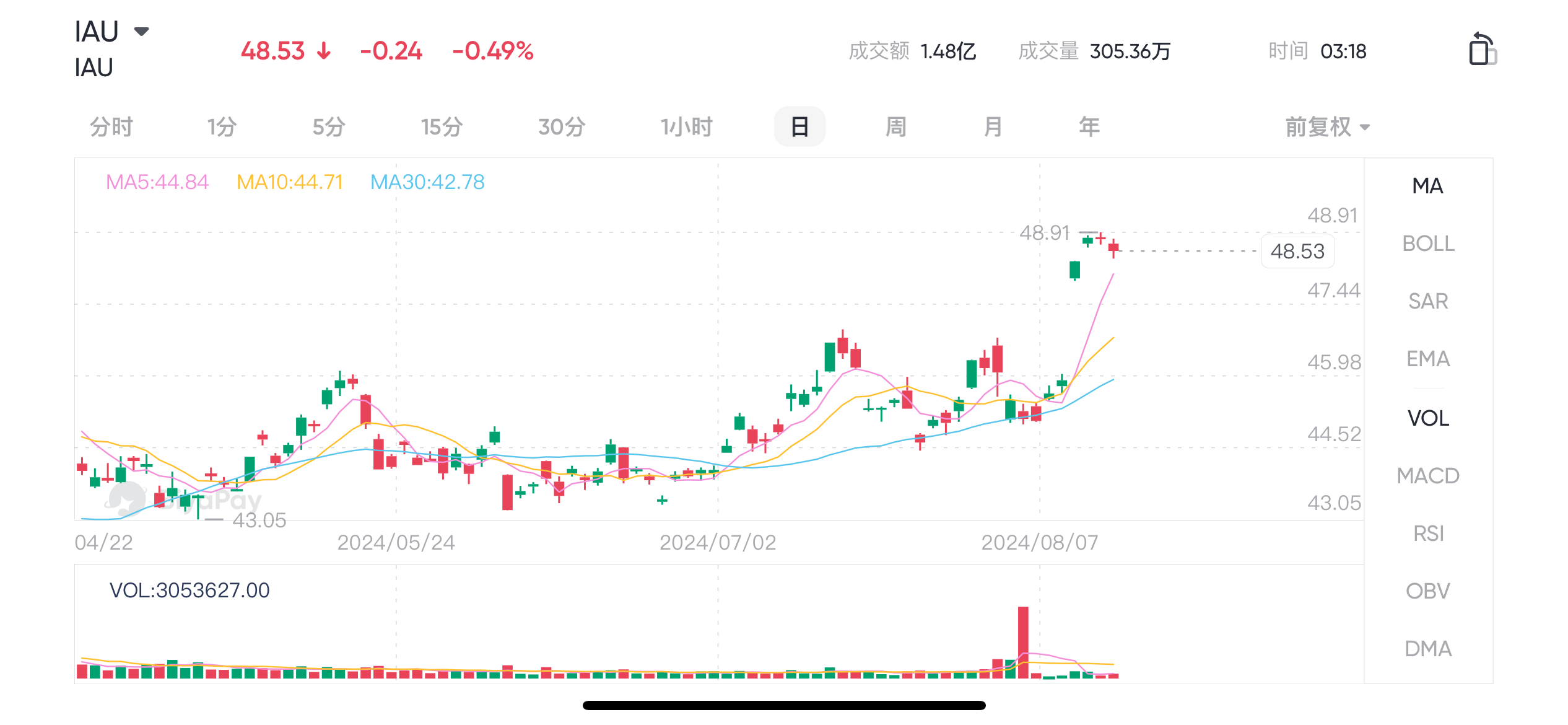
- Aberdeen Standard Physical Gold Shares ETF (SGOL): This ETF also invests directly in physical gold with low management fees and is suitable for long-term holding.

Silver ETF:
- iShares Silver Trust (SLV): Invests directly in physical silver and is suitable for investors who are bullish on silver price movements.
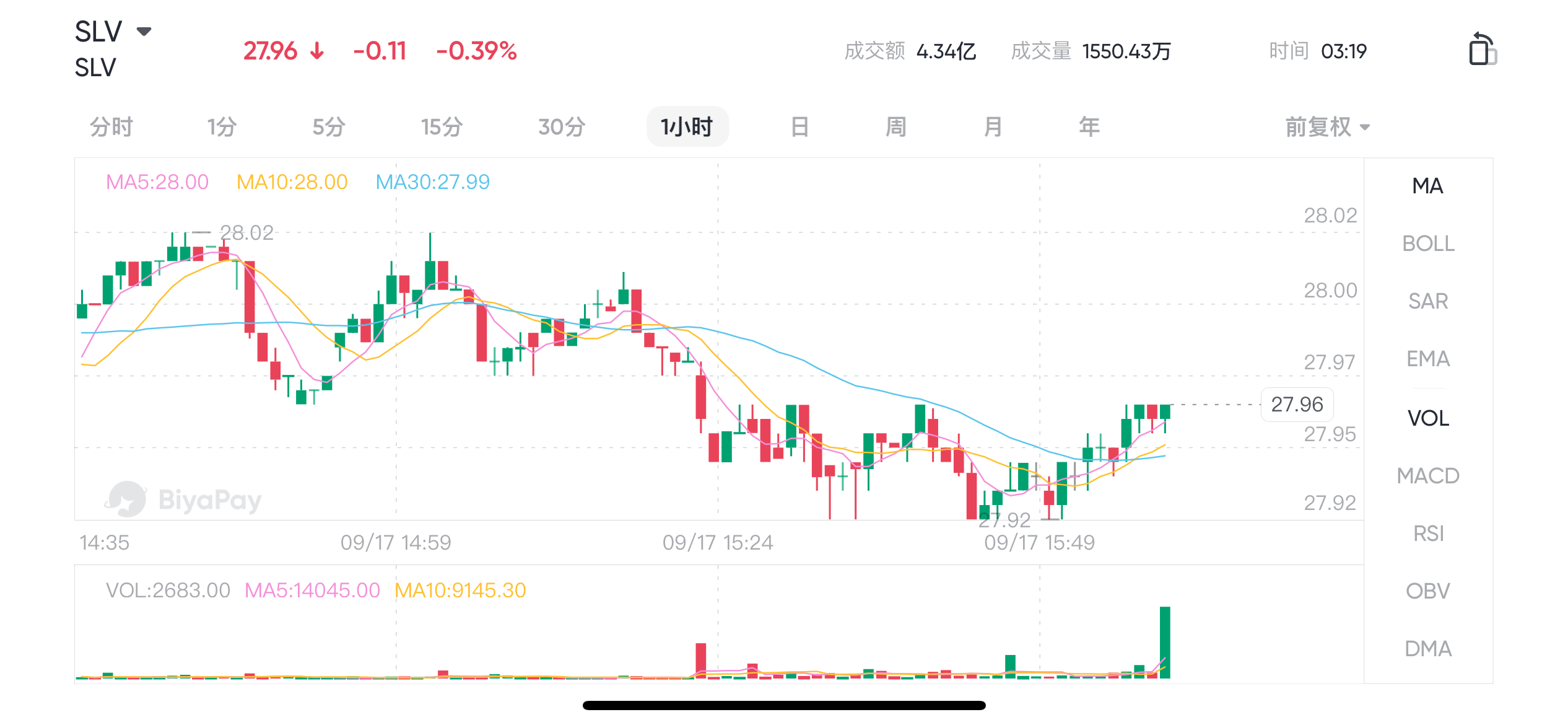
- Aberdeen Standard Physical Silver Shares ETF (SIVR): Another major silver ETF that also invests in physical silver with lower management fees.

Platinum and Palladium ETFs:
- Aberdeen Standard Physical Platinum Shares ETF (PPLT): Invest directly in physical platinum, suitable for investors who are bullish on platinum price trends.
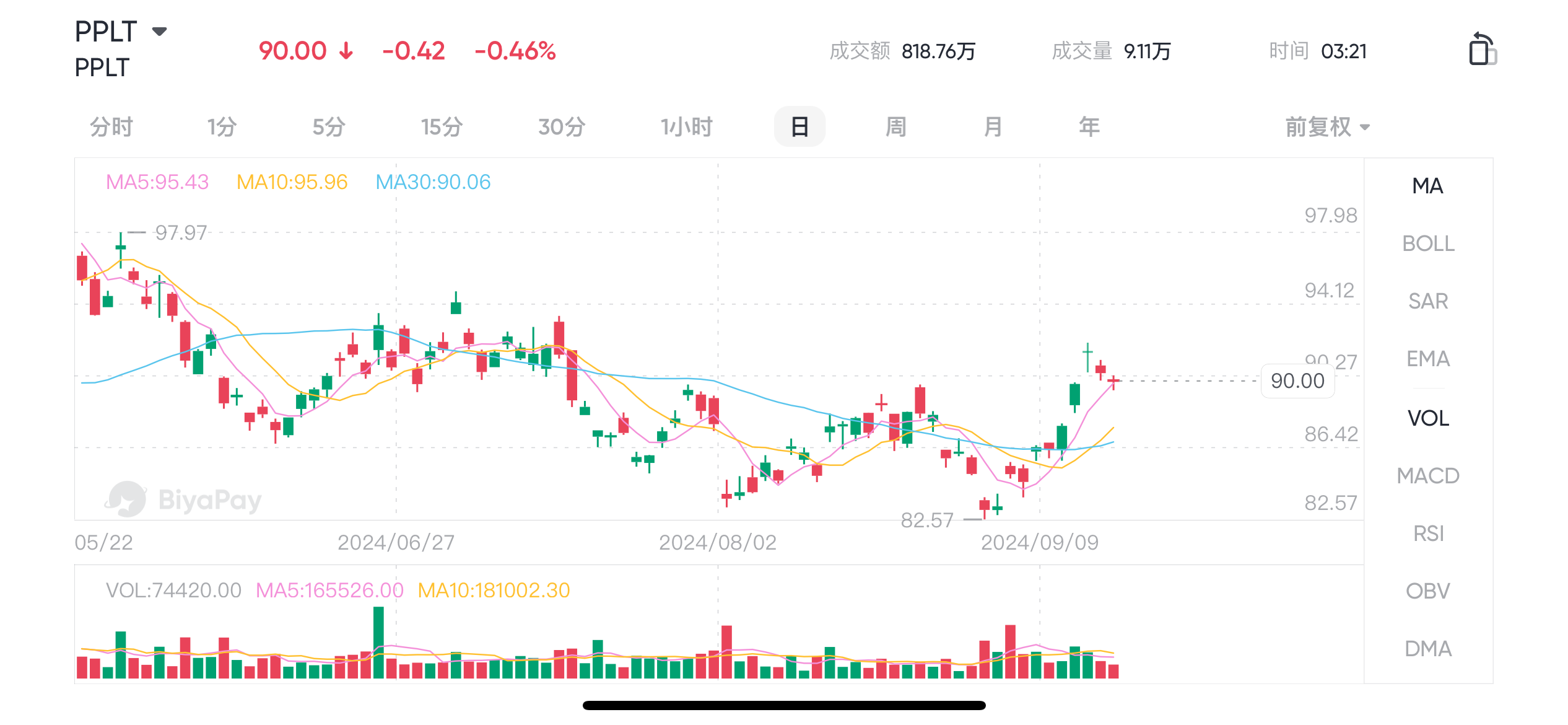
- Aberdeen Standard Physical Palladium Shares ETF (PALL): Direct investment in physical palladium, suitable for investors who are optimistic about the trend of palladium prices.
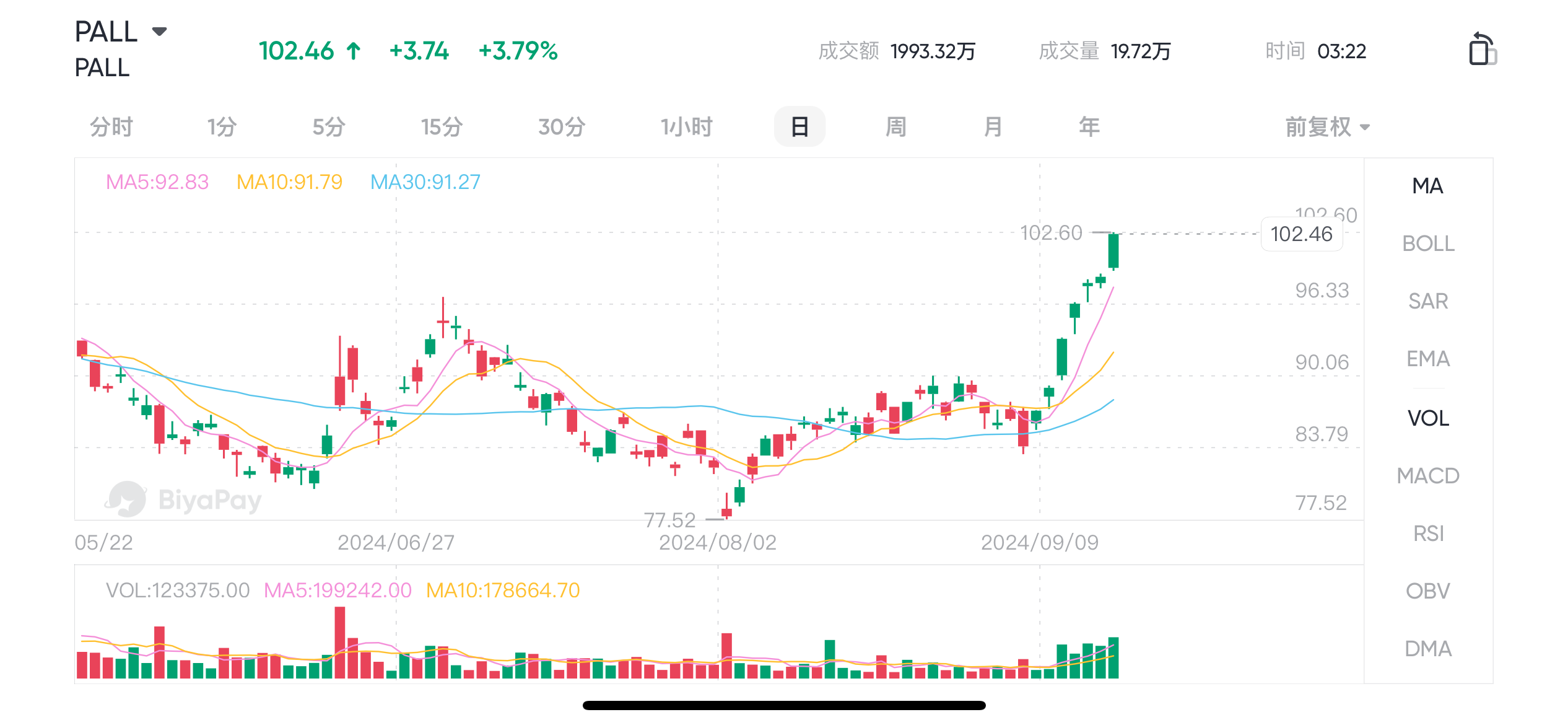
Composite Precious Metals ETF:
- ETFS Physical Precious Metals Basket Shares (GLTR): This ETF invests in a basket of precious metals including gold, silver, platinum and palladium, providing diversified exposure to precious metals.
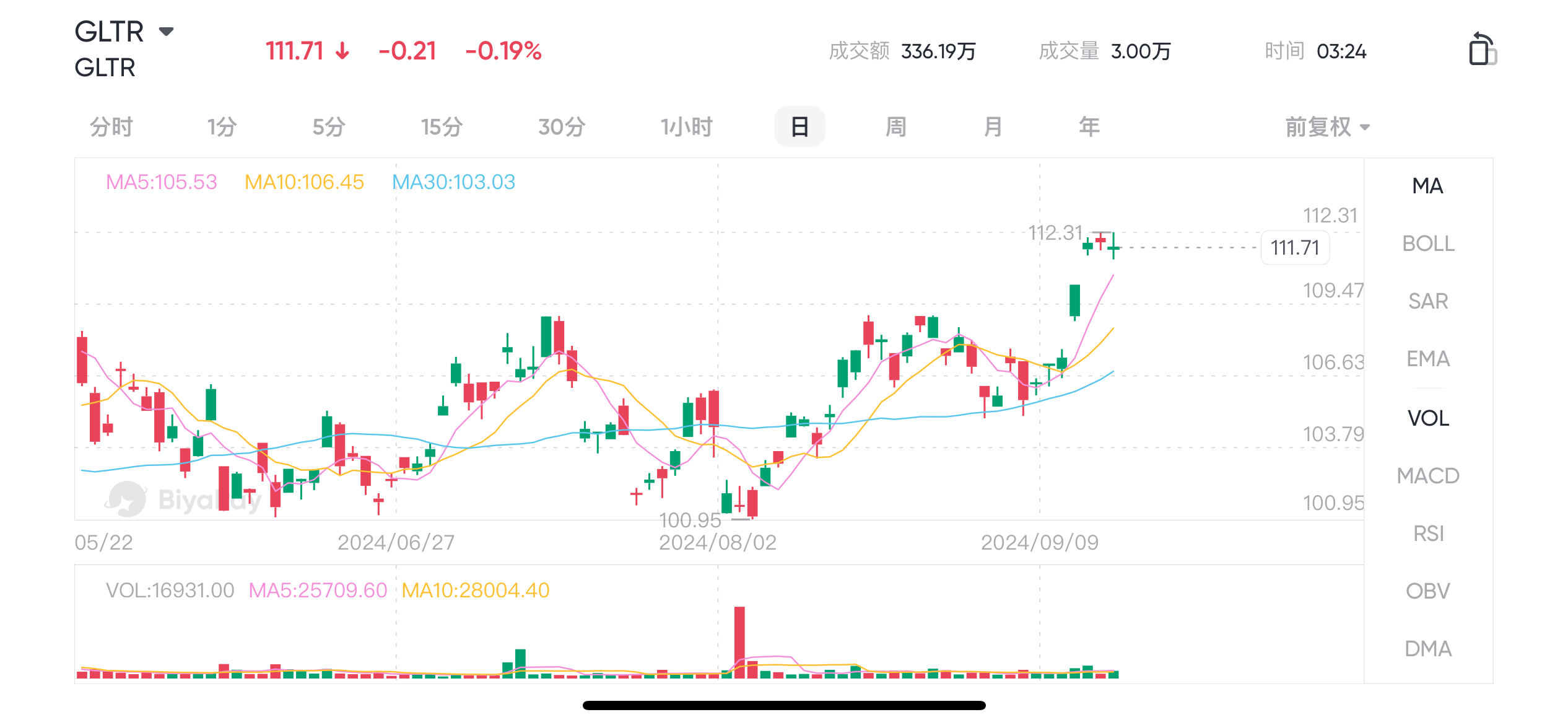
- iShares MSCI Global Gold Miners ETF (RING): Invests in the stocks of major global gold mining companies, suitable for investors who want to gain profits from the rise in gold prices through mining stocks.
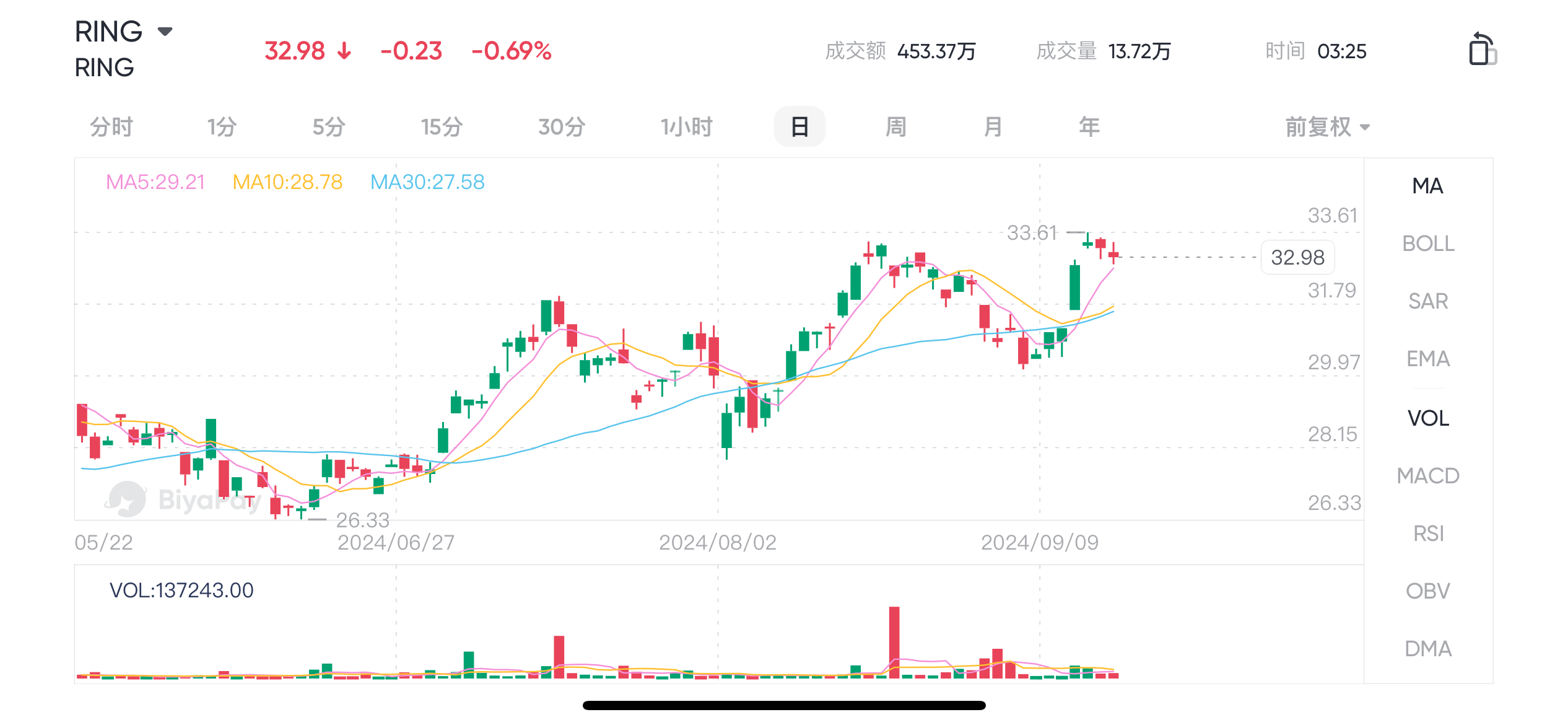
- VanEck Vectors Gold Miners ETF (GDX): Investing primarily in gold mining companies, providing broad exposure to mining stocks, suitable for investors who are optimistic about gold prices and mining company prospects.

- VanEck Vectors Junior Gold Miners ETF (GDXJ): Invests primarily in small and medium-sized gold mining companies with higher risk but also higher potential returns when gold prices rise.
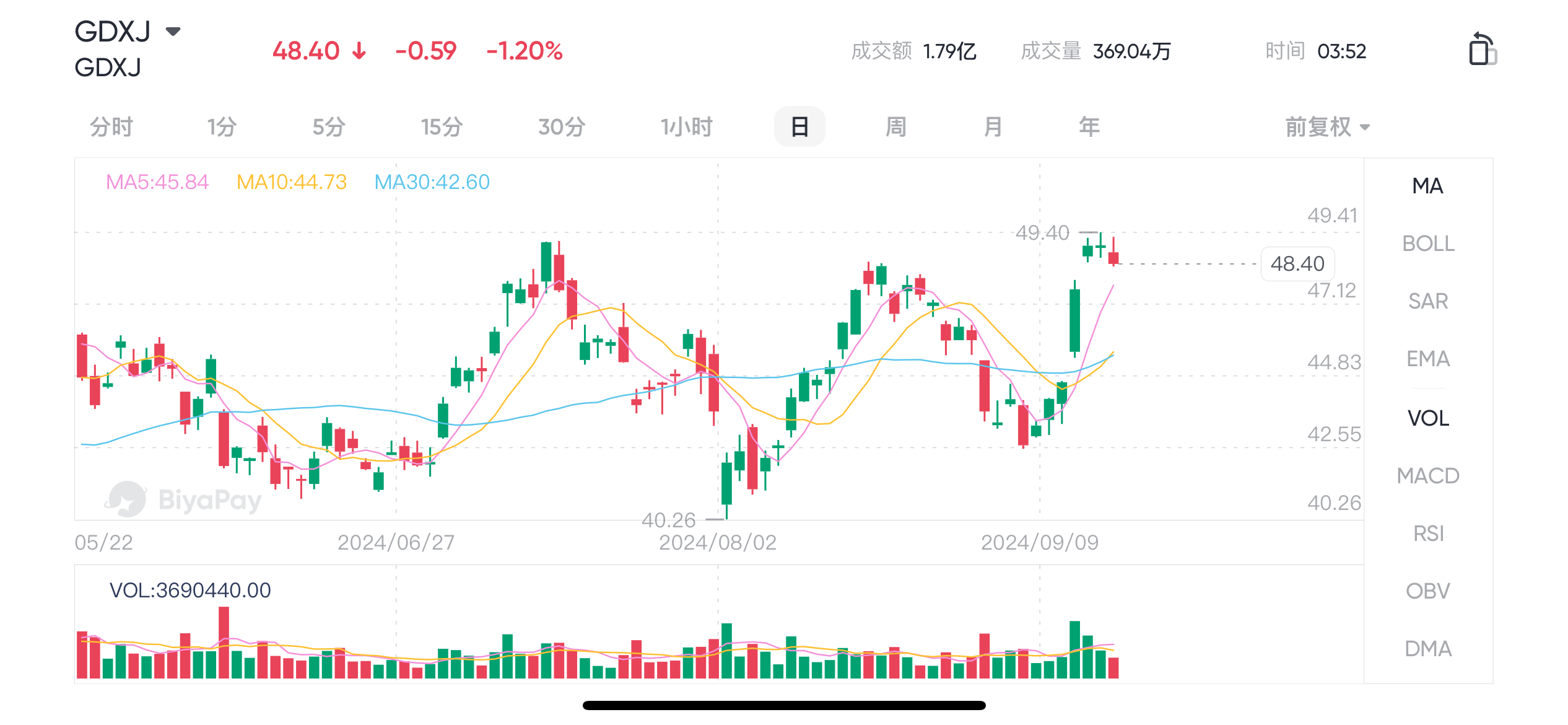
Double long ETF (relatively aggressive)
- Gold ETF-PowerShares DB Double Long (DGP)
- Gold ETF-ProShares Double Long (UGL)
- Silver ETF-ProShares Double Long (AGQ)
For the above investment strategies, the editor suggests:
If the risk tolerance is low, you can choose an ETF that directly tracks the price of gold or silver (such as GLD or SLV). If the risk tolerance is high, you can choose a mining company ETF (such as GDX or GDXJ). If you want to diversify your investment risks, you can choose a comprehensive precious metals ETF (such as GLTR) or diversify your funds into different precious metals ETFs.
In summary, when choosing an ETF, one should evaluate it based on their own investment objectives, market expectations, and risk tolerance.
The Fed’s interest rate cuts usually have a positive impact on the price of gold, driving up the price by lowering real interest rates, causing the dollar to depreciate, increasing inflation expectations, and boosting market demand for safe havens. Investors can consider increasing their gold allocation during the Fed’s interest rate cut cycle as an effective means of hedging economic uncertainty and inflation risks. Maintaining diversification and dynamically adjusting investment portfolios is an important strategy for achieving stable investment returns in a complex market environment

























